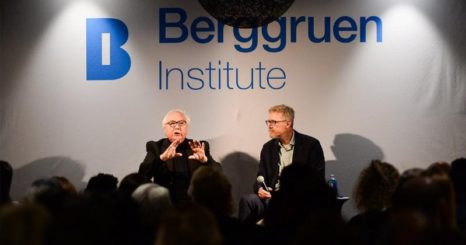Nathan Gardels is the editor-in-chief of Noema Magazine.
“Where are the new institutions worthy of our trust?” the famous scholar of the networked society asked. Instead, he sees citizens acting autonomously through the use of new technologies. “They’re making use of the capacity for self-communication, deliberation and co-decision-making that is now at our disposal thanks to the ‘Internet Galaxy,’ and putting the enormous wealth of information and knowledge into practices to help manage our problems.”
Yet, as the neuroscientist Antonio Damasio alluded to in a question, these very participatory social networks that played a key role in upending the old order and are now the default platform of self-governance are primarily driven not by reasoned discourse but by the same emotional impulses as the neural networks of the mind to which they are now connected. They are, in effect, prosthetic extensions and amplifiers of human nature. Where emotion reigns unmediated by reason, fear, prejudice, hatred, misinformation and magical-thinking thrive.
This observation led in turn to a question about whether bots or Russian influence-meddling through social media sites really had any impact on the 2016 U.S. election. Castells thought not. If the receiver’s antenna was already open and sympathetic to the message being conveyed — whether true or false — such interventions would have an impact. But if not, they wouldn’t. Few minds would have been changed either way.
The influence over hearts and minds comes not so much from the content of information, but from what people are ready and willing to believe based on their meta-informational outlook. Without the built-up resentment toward elites whom they felt dissed their dignity, those Hillary Clinton called “deplorables” wouldn’t have been receptive to negative messages in the first place.
For this reason Castells sees the hysteria over Russian meddling as a distraction from the real issue, as may be the case with fake news itself. No amount of policing the Internet can fix the fundamental problem. It is not about facts but about the image people have of the world and their place in it that determines what they are ready to believe. It is not superior ideas or better information that will outcompete trolls. The contest that matters concerns the power of metaphors and images that are compelling enough to bind communities in association — or tear them apart.
Most people tend to apprehend reality by what works for us metaphorically. We buy into a narrative not so much by weighing arguments as by the emotional connection to the image we want to be associated with that confers prestige, dignity and identity in our own lives and shines some glory on our story. As the French philosopher Régis Debray has written, “It is the symbolic that creates the social bond, not the other way around.”
This power of metaphoric association through symbols is obvious in daily life, from the craze for iPhones in China (until recently) to teen fashion and tattoos. It is manifest in how cars are marketed. The Subaru is for warm and cuddly families, or couples in touch with nature. The Tesla is for the “double green” — the rich and environmentally aware. The Ford “built tough” pickup truck is for the rugged non-elite who actually work with their hands.
The culture wars in America today over the custodianship of perceptions are being waged at this level of the metaphor.
In an earlier era, Barack Obama’s vague vision of “hope” captured the imagination of a diverse America that had finally come to terms with itself, only to consolidate a constituency in opposition that felt excluded from those new terms and alienated from its narrative. As a symbol, President Trump’s “wall” stands above the fray of facts for a whole range of associations, from racism and xenophobia to physical and economic insecurity to a deep distaste for the cosmopolitan class that harbors liberal sentiments. That is why so much of the opposition to “the wall” that talks reasonably about tunnels, drones or procedural asylum issues, while substantively correct, is beside the point.
In the end, of course, symbolic associations can only continue to bind communities if their promise does not deviate too far from reality. If the breach is too great, the bond is broken. To deliver, sound governance must stand behind the symbolic bond. That is why the trustworthy facts and impartial institutions required for reasoned public discourse are ultimately essential for reaching a governing consensus and avoiding the suicide of republics.
Castells doubts we will ever get back to this possibility of consensus because the institutional link between the governing and governed is terminally severed. Only the vast emotional transmission grid of social networks remains as the relevant public space.
At the very end of his book, Castells suggests we give up the attempt to build a new order and instead “configure a creative chaos in which we learn to flow with life’s current instead of forcing it into bureaucracies and programming it into algorithms.” His very last line: “Maybe learning to live in chaos would be less harmful than conforming to the discipline of yet another order.”




